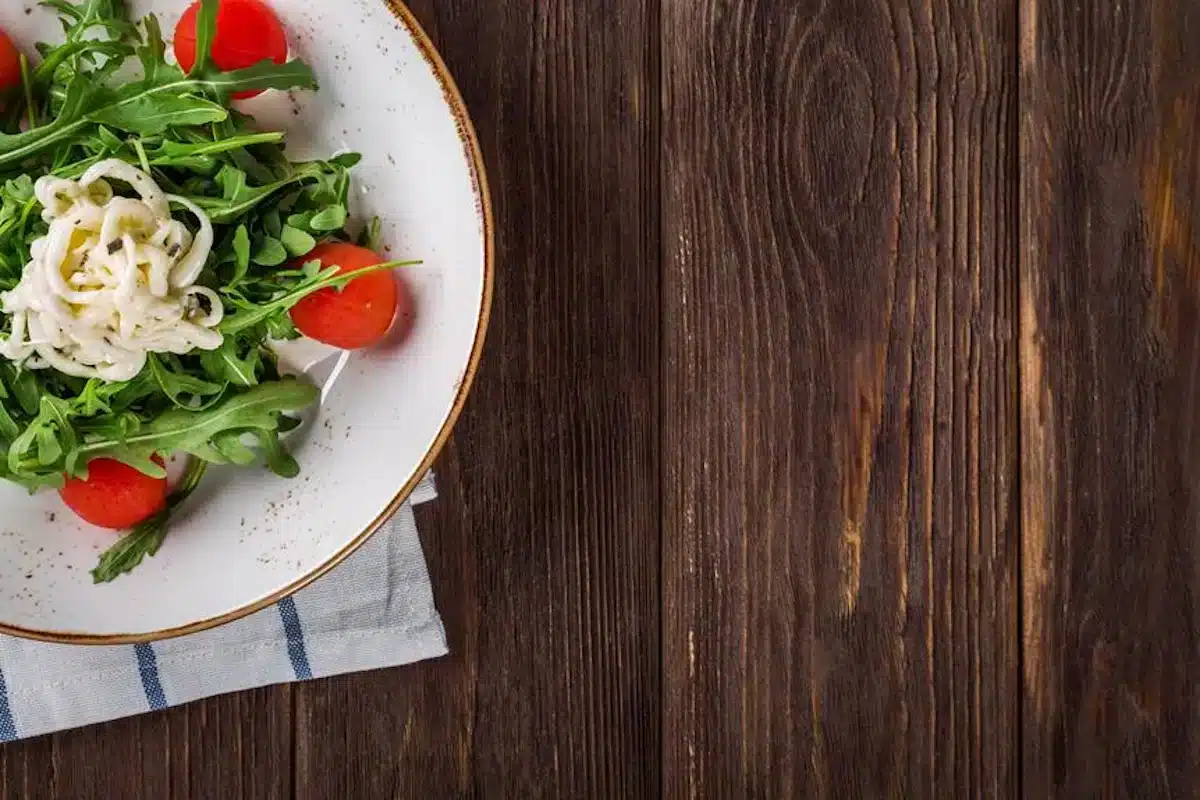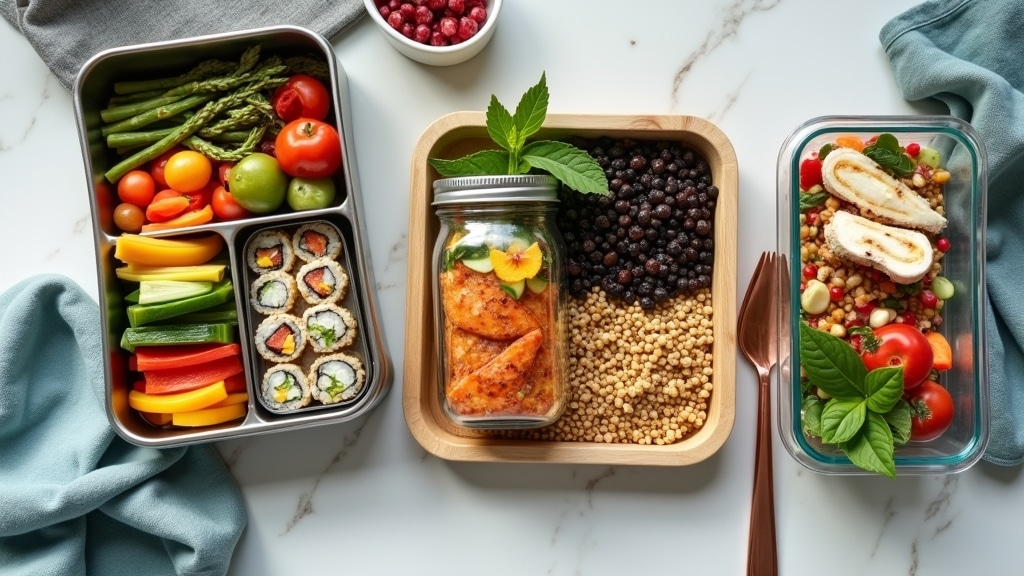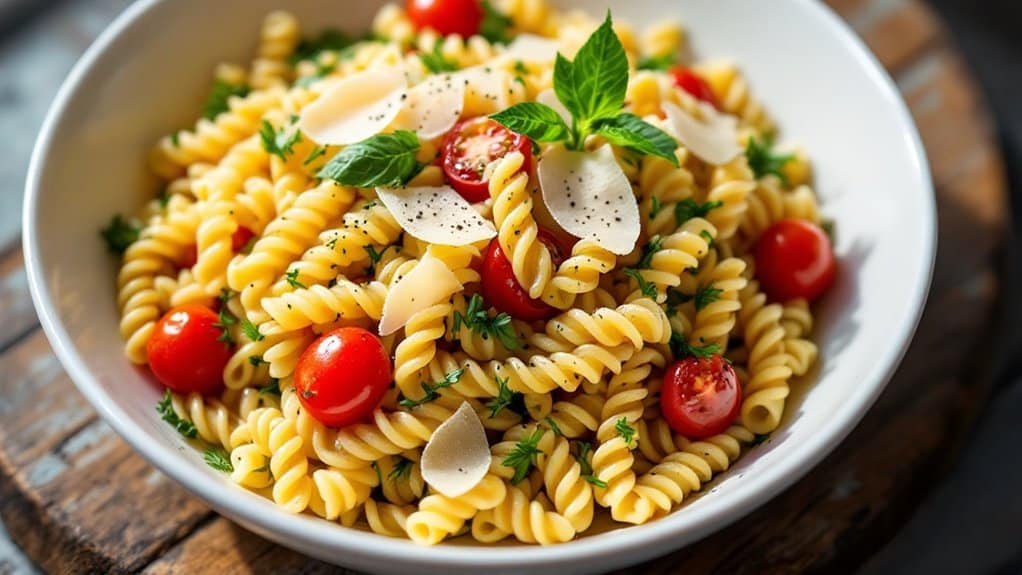For nearly a century, Murray’s Restaurants has stood as a beloved Canadian culinary institution, serving up comfort food and fostering cherished community memories. Founded in Montreal in 1923, this iconic chain quickly expanded across cities like Toronto, Ottawa, and Sudbury, becoming a cultural hub synonymous with Canadian heritage. Despite its widespread popularity, Murray’s eventually faced challenges from changing tastes and financial difficulties, leading to its bankruptcy and the closure of its last location in July 2009. Yet, its legacy of warmth, family, and classic Canadian fare continues to resonate deeply with generations.
Imagine this: a cozy little spot in Montreal, serving up comfort food that’d make your grandma proud. The early menu? Think meatloaf that’ll stick to your ribs and Jell-O that wiggles just right.
| Murray’s Restaurants Recipes Found on The Lunch Pro |
|---|
| Legendary Bran Muffins |
| Rice Custard Pudding |
| Steamed Fruit Pudding |
| Vanilla Sauce (for Steamed Fruit Pudding) |
Over the years, Murray’s expanded to become a beloved institution in cities such as Toronto, Ottawa, and Sudbury. Its Lucerne Shopping Centre location is particularly nostalgic for many patrons. Detailed transcripts from the Culinary Institute of America Digital Collections reveal numerous precise addresses across Montreal (e.g., 640 St. Catherine St. W., University Tower), Toronto (e.g., 62 Front Street East, 770 Yonge Street), Ottawa (e.g., 206 Queen Street, Lord Elgin Hotel), and Sudbury (Hotel Coulson). This wealth of specific location data unequivocally demonstrates a significant and widespread geographical presence for the chain.
We’re not saying Murrays invented customer loyalty, but they perfected it. Folks would return day after day, treating the place like their second home. It’s where family traditions were born, with kids dragging their parents in for that legendary steamed fruit pudding.
The cultural impact? Let’s say Murray’s wasn’t just feeding bellies; it was nourishing the soul of a nation.
Murray’s was there through it all, from supporting the troops during World War II. During this period, restaurants became more central to modern life, and food rationing significantly increased patronage as ration coupons were not required in restaurants. By maintaining a stable, familiar dining experience, Murray’s played a vital role in sustaining homefront morale and providing a sense of normalcy during a tumultuous period. to becoming the go-to spot for everything from first dates to retirement parties. It’s where freedom-loving Canucks could kick back, enjoy a hearty meal, and feel right at home.
Now, that’s what we call a recipe for success!
The Idea
Inspiration struck like a bolt of culinary lightning when Murray’s was conceived. We can almost envision the founders huddled around a table, dreaming up a place where comfort food and community intertwine. They weren’t just planning a restaurant but laying the foundation for Murray’s Legacy. The founders recognized that venue selection would be crucial, so they considered factors such as accessibility and parking to ensure customer satisfaction from the outset.
Little did they know their brainchild would become the epicentre of Community Gatherings for generations. From first dates to family reunions, Murrays would play host to countless Nostalgic Memories. Let’s not get too misty-eyed just yet! The idea was simple: create a haven where folks could escape the daily grind and savour a slice of Culinary Heritage. Imagine this: steaming plates of meatloaf, jiggly Jell-O, and that legendary steamed fruit pudding. Mmm, can’t you taste the freedom? But it wasn’t just about the grub. Employee Stories would weave into the fabric of Murray’s, creating a workplace that felt more like family. Who knew slinging hash could forge such lasting bonds?
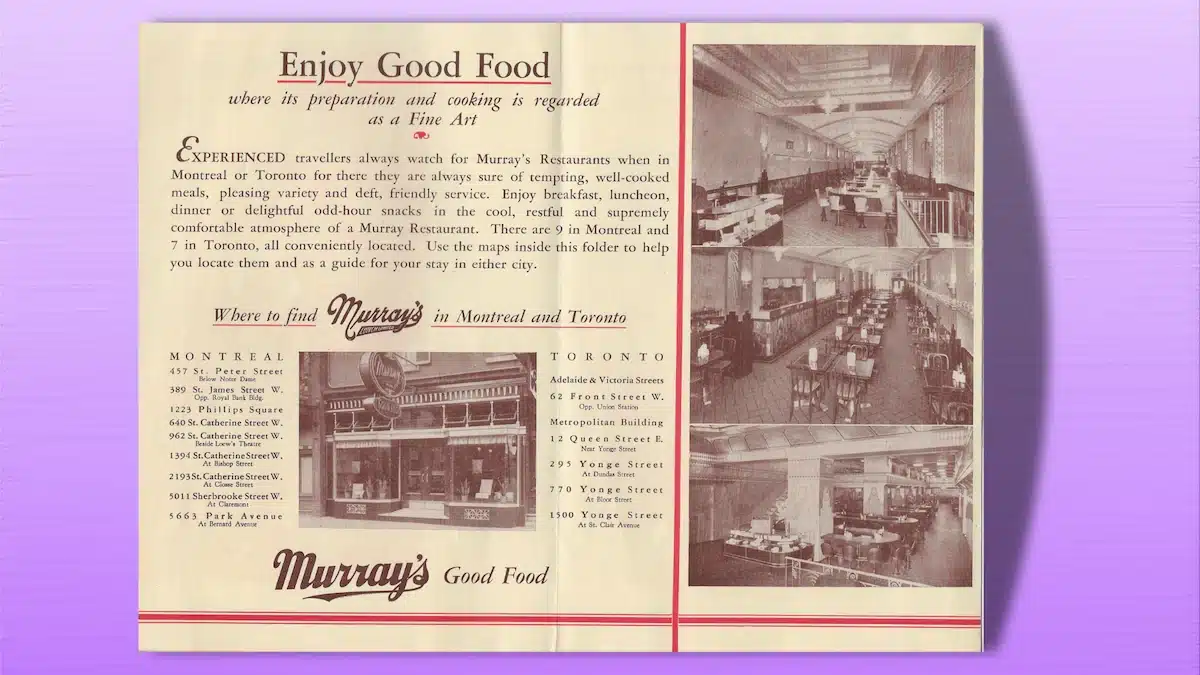
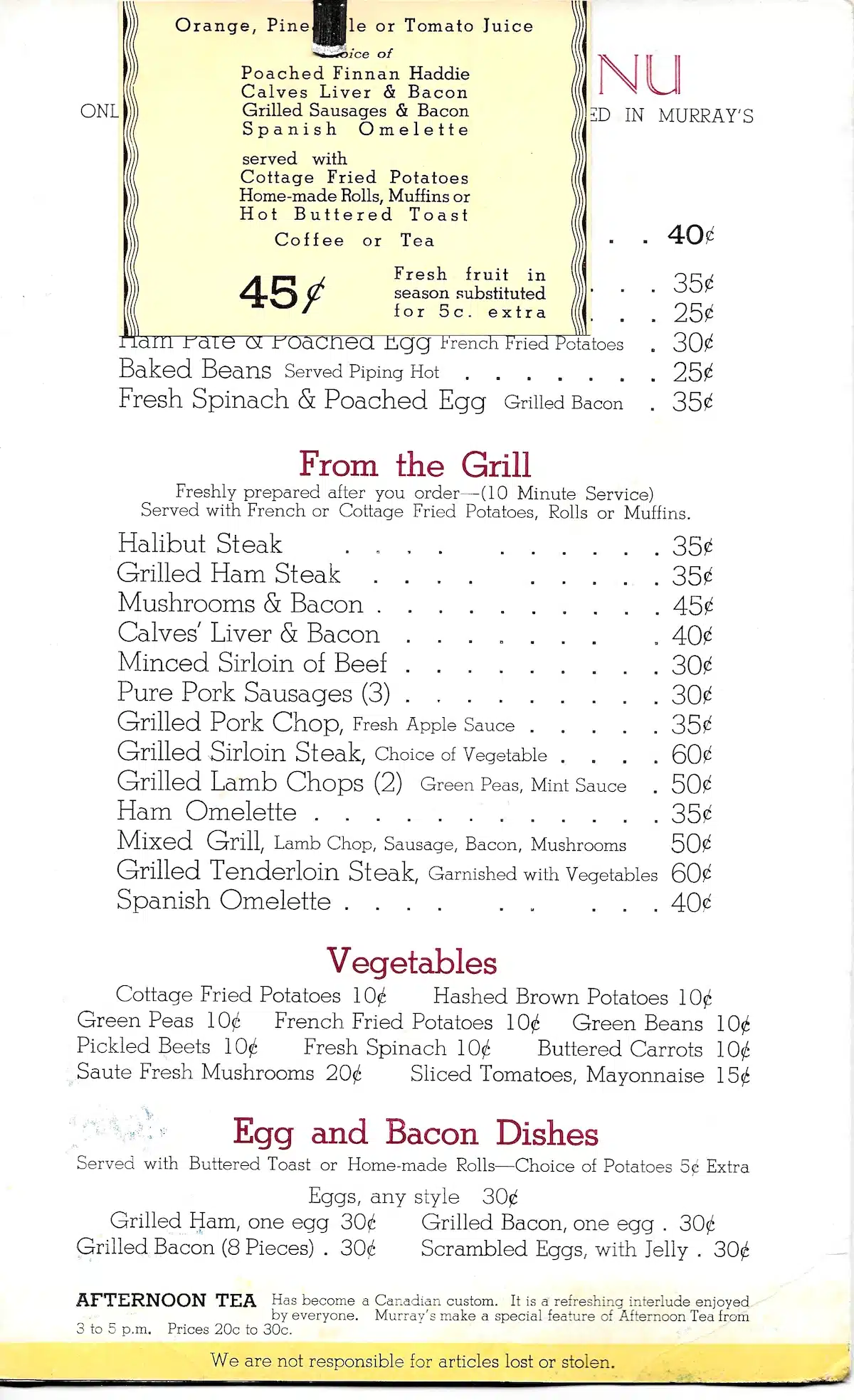
A Slice of Canadiana in Every Bite
Murray’s Restaurants weren’t just about filling bellies; they were all about the heart. From hosting community events to supporting troops during World War II, they were the go-to spot for internal communication, morale-building, and fostering a sense of “family” among employees —a sentiment echoed in the article’s description of “creating a workplace that felt more like family.” This approach offers a forward-thinking perspective on human resources for its time, acknowledging the critical role of employee well-being and shared identity within a large organization. The Skillet” was more than a simple newsletter; it was a strategic instrument for cultivating a robust corporate identity and strong loyalty among Murray’s extensive workforce.
This internal cohesion likely contributed directly to the consistent “warm service” and “comforting and familiar atmosphere” that patrons experienced across the chain. You could walk into any Murray’s and know exactly what to expect: great food, warm service, and a comforting and familiar atmosphere.
And talk about cultural influence! Murray’s wasn’t just serving food; it was dishing out a slice of Canadiana. It became a meeting place, a comfort zone, and a shared memory for countless folks.
Who knew a restaurant could be such a rebel, fighting for our freedom to enjoy a good meal?
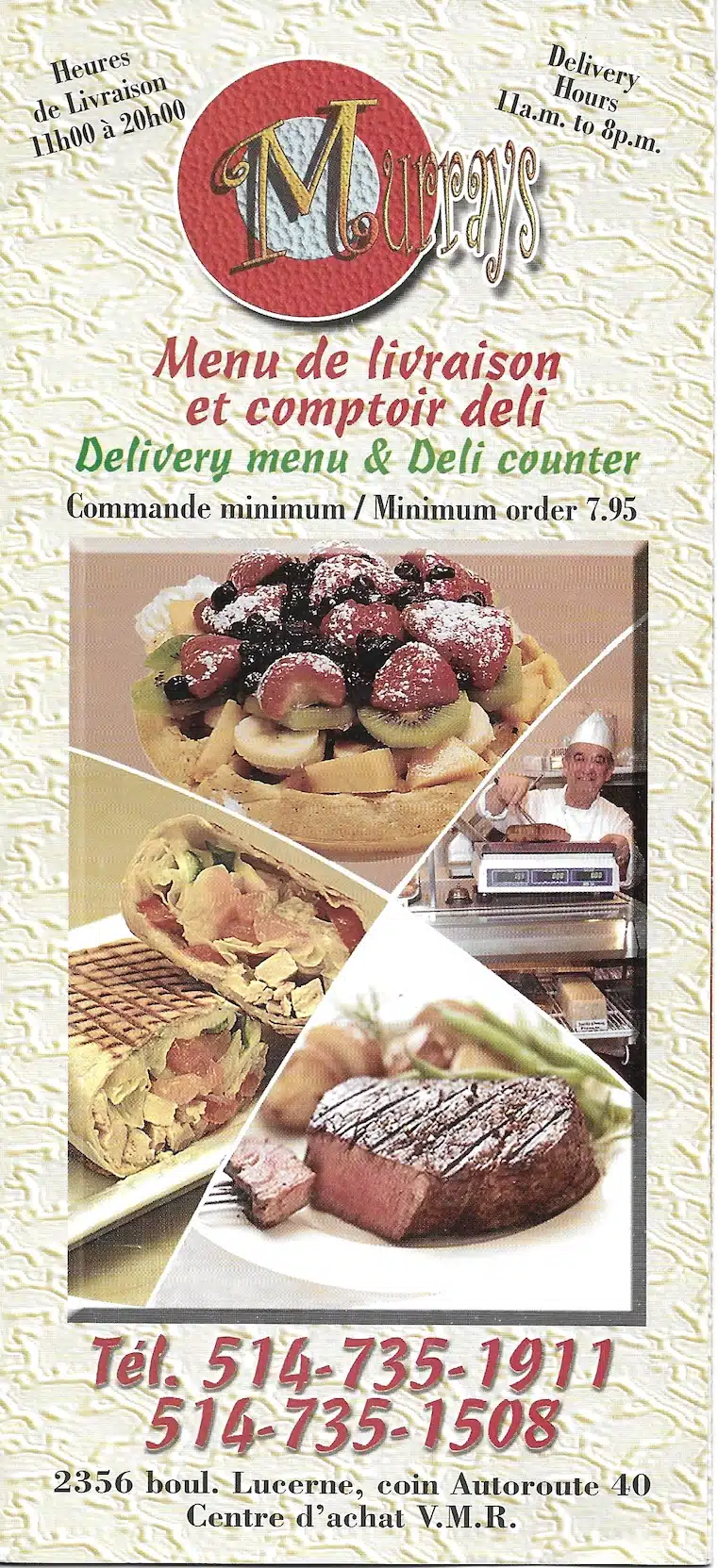
Challenges and Decline: From Boom to Bust
After decades of success, the winds of change began to blow against Murray’s.
We’d love to say it was just a hiccup, but let’s face it – the decline was real. Community nostalgia couldn’t save our beloved restaurants from the harsh realities of financial mismanagement.
However, like many beloved institutions, Murray’s faced challenges. By the 1980s, the end of a storied run of over 75 years left a void in the hearts of its loyal customers. Its final menu, which included a deli counter, bore little resemblance to the “diner” style that had been its unique signature, reflecting the challenges of balancing tradition with modernization.
The final Murray’s location in Montreal, nestled in the Lucerne Shopping Centre, faced these struggles head-on. Despite nostalgic support from long-time patrons, it shuttered its doors at the end of July 2009. The closure marked the end of a storied run of over 75 years, leaving a void in the hearts of its loyal customers. When it closed, its menu was reminiscent of the many other “family” style restaurants of the time, with a deli counter and less of the “diner” style, which was its unique signature. The precise closure date of July 2009 is highly significant, as it places Murray’s final demise squarely within the most impactful period of the 2008 global financial crisis and subsequent recession.
While the available information does not explicitly state that the recession directly caused Murray’s bankruptcy, the parallel with “Tavern on the Green,” a prominent New York City restaurant that expressly cited the “Great Recession” as a factor in its 2009 bankruptcy, is compelling. The article mentions that the “local economy also played its part” and customers had “less dough to spend,” further supporting the influence of external economic pressures. While internal factors, such as changing tastes and financial mismanagement, certainly contributed to Murray’s decline, the severe economic downturn of 2008-2009 likely dealt a decisive, insurmountable blow. The recession reduced consumer discretionary spending and exacerbated existing vulnerabilities, pushing Murray’s, like many other long-standing establishments, past the point of no return.
The local economy also played a significant role. As mom-and-pop shops gave way to big-box stores, our loyal customers had less dough to spend on our famous steamed puddings.
And let’s not forget the shifting sands of dining culture. Suddenly, everyone was a foodie, and our comfort classics were deemed passè.
Who knew that Instagram-worthy plates would become more important than a hearty meal?
We tried to adapt, but sometimes you can’t teach an old restaurant new tricks.
A Legacy That Lives On
Murray’s may have shut down, but its impact lingers. Whether it was a piping hot “Chicken in the Basket” or a quiet conversation over muffins, Murray’s nourished bodies and hearts. For many, Murray’s was more than just a restaurant; it symbolized warmth, family, and community.
So, while we might not be able to order a second cup of coffee at Murray’s anymore, the memories—along with a few recipes—live on, reminding us of simpler days spent in cozy booths, surrounded by the familiar hum of content diners—cheers to Murray’s, the place that brought Canada together over good food and great memories.
Distinguishing from Other “Murray’s”
A significant finding from our research is the existence of multiple other establishments named “Murray’s” that are distinct from the Canadian restaurant chain under consideration. These include the prominent Murray’s Restaurant in Minneapolis, Minnesota, a steakhouse founded in 1946 and known for its “Silver Butter Knife Steak.” Other distinct entities include the historic Murray Premises in St. John’s, Newfoundland, which is a building complex rather than a restaurant chain, Murray’s Saloon & Eatery in Big Bear, and Murray’s Cheese Shops.
Murray’s Restaurants’ FAQs
What Was Murray’s Most Popular Dish Throughout Its History?
Murray’s signature dish was their steamed fruit pudding with white vanilla sauce. It’s been a customer favourite for decades, reflecting historical dining trends and regional influences. Their menu innovation kept us coming back for more nostalgic comfort food. You can find the genuine recipe right here on our website.
How Did Murray’s Menu Evolve Over the Decades?
Murray’s menu evolved over the years, reflecting innovations in ingredients and shifting customer preferences. Regional influences shaped their offerings, while culinary trends inspired the creation of new dishes. They’ve adapted to keep us returning, embracing our freedom to choose. In subsequent articles, we’ll examine a menu from the 1950s, incorporate Jon Simon’s memories of the ’70s menu, and review the final menu from the last location.
Did Murray’s Have Any Unique Holiday Traditions or Special Events?
Murray’s celebrated Canadian Thanksgiving every October. This marked the start of adding Steamed Fruit Pudding to their dessert menu, followed by the Christmas and New Year’s menus. They celebrated St. Patrick’s Day with Lamb Stew, Irish Coffee, and their signature Creme de Menthe (green) ice cream parfait each year. Every spring, they added Strawberry Shortcake, while mid-summer added peach desserts. For Christmas, they served my father’s favourite, Mince Pie.
The Lunch Pro | Devoted to Murray’s Memories and Flavours
As we bid farewell to Murray’s, we’re left with a mountain of memories as tall as their famous meatloaf stack! We’ve laughed, cried, and certainly eaten our way through nine decades of Canadian comfort food history. Though the blue uniforms are now a nostalgic blur, Murray’s legacy lives on in our hearts (and maybe our waistlines). Here’s to the restaurant that fed our souls and stomachs – we’ll always have a seat at your table! The Lunch Pro has devoted an entire section of this website to food memories, and a large portion covers Murray’s nostalgia and recipes as we peruse their menu over the years.





